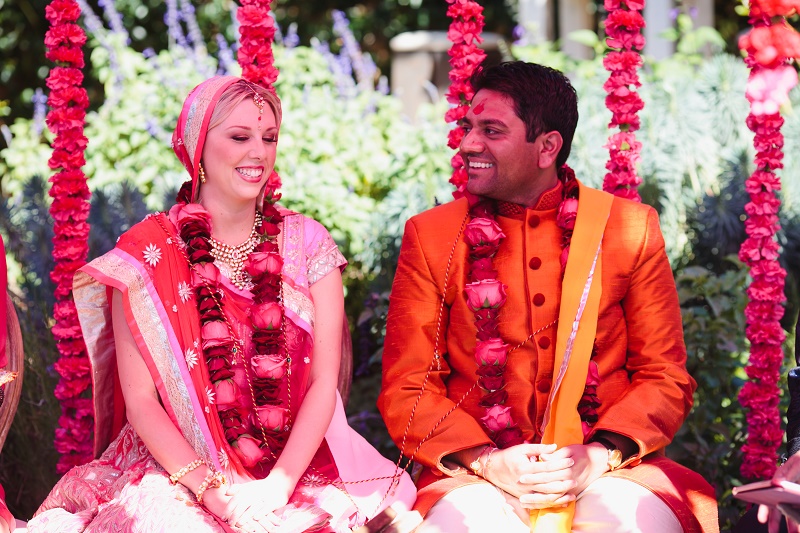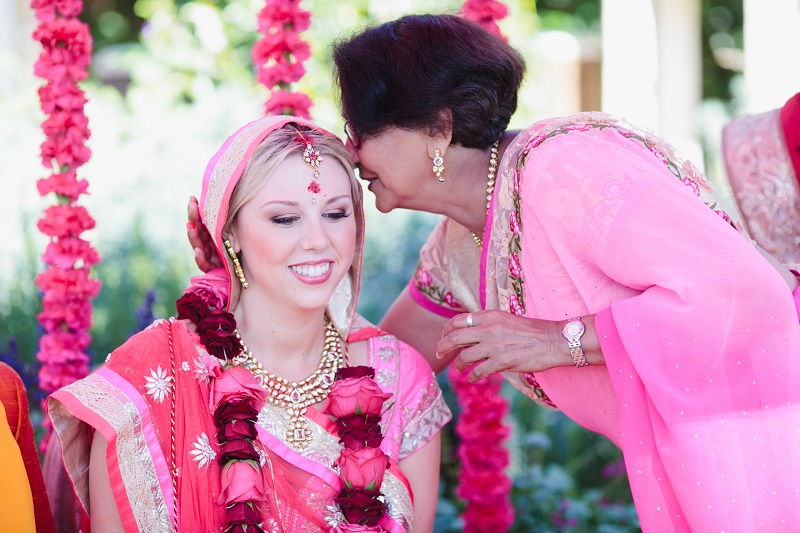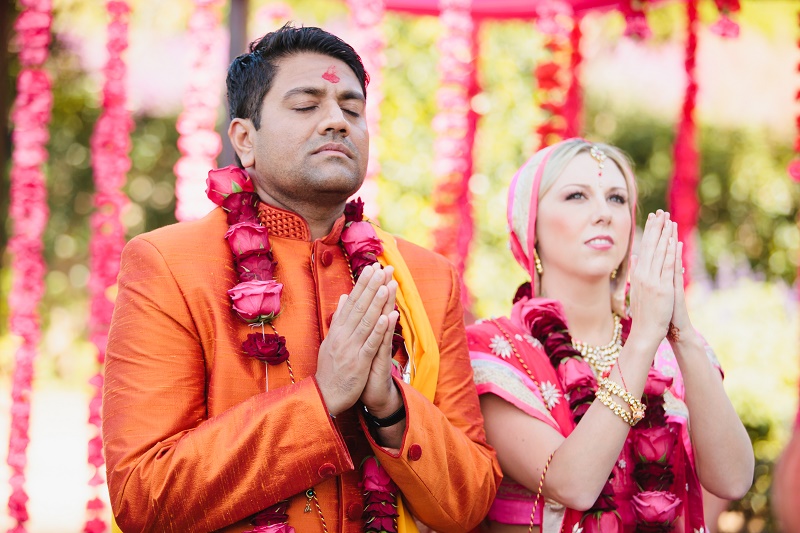The Sacred Beauty of Hindu Wedding Ceremonies
THE HINDU WEDDING IS A ROMANTIC STORY TOLD ONE RITUAL AT A TIME
We designed a modern Hindu Christian wedding for Kelly and Minesh at the beautiful San Ysidro Ranch in Santa Barbara, California. The Ranch’s fragrant garden was the perfect location for their intimate outdoor celebration. As you can see, it was a modern blend of Hindu rituals, Indian customs and sentimental traditions. Of course, with a South Asian wedding ceremony, it all begins with a Mandap! Hindu weddings are supposed to take place outside under a canopy known as a “mandap,” which, is somewhat similar in symbolism to a Jewish Chuppah in that it represents the home. Specifically, the Mandap is the central, open-sided structure under which the Indian wedding ceremony takes place around the Sacred Fire. Colors, decorations and flowers used in the creation of the Mandap are all tremendously personal and reflect the cultural heritage of the families involved.
THE INDIAN CEREMONY
And when designing an Indian ceremony such as this one, it helps us to think of the actual Hindu wedding ceremony as if it were a romantic story told one ritual at a time. For instance, the bride and groom come to the Mandap separately, as if unknown to each other. They fall madly in love with each other and ask for their parents’ permission to marry. Through various meaningful rituals, each family explains the meaning of Hindu marriage, the couple accepts the obligations it requires and commits to remain faithful to each other, they pledge their commitment in the Sacred Fire, and are blessed by their family as they start their journey together. And so on, and so forth. POWERFUL.
ELEMENTS TO CONSIDER WHEN PLANNING YOUR OWN HINDU CHRISTIAN WEDDING:
Family traditions. There are universal components in the Hindu ceremony, yet each region in India has different local customs and each family may pray to different gods and goddesses. Ask your family about specific regional traditions. Also, you may want to give parents a chance to offer a traditional blessing within, or just prior to, the ceremony.
Creating a sacred space. One way to honor tradition is to have the ceremony under a four pillar canopy, and raised platform, called a mandap, which represents a temple. While traditionally the couple sits on thrones or pillows, interfaith couples may also stand at the altar. However, they often invite their parents to sit in chairs in the mandap.
Lighting the sacred fire. A key aspect of the Hindu ceremony is to light a scared fire, usually created from ghee and woolen wicks, to evoke the God, Agni (Fire), to bear witness to the ceremony. Often the father, brother, or uncle will create the sacred fire.
Garland Exchange. During the ceremony the couple exchanges fresh garlands, welcoming each other into each others families. Making this one of the first gestures in an interfaith ceremony can be a lovely start for all as it is a sweet way to establish a connection between the couple and their loved ones.
The Seven Sacred Steps. The highlight is Saptapadi, also called “The Seven Steps.” Traditionally, the bride’s sari is tied to the groom’s Kurta, or a sari shawl might be draped from his shoulder to her sari. He leads, often by her pinkie linked with his pinkie, in seven steps around the fire, as the priest chants seven blessings or vows for a strong marriage. By walking around the fire they’re agreeing to these vows. With each step, they throw small bits of puffed rice into the fire, representing prosperity in their new life together. This is considered the most important part of the ceremony, as it seals the bond between the couple forever. A nice way to adapt this into a creative, contemporary ceremony is to light a traditional fire, or a candle, placed on a small table in front of the wedding altar and guide the couple as they take seven steps while seven blessings are spoken in English.
{Floral and Event Design: Elena Damy; Venue: San Ysidro Ranch, Santa Barbara, California; Photography: Palos Studio}
One Response to “The Sacred Beauty of Hindu Wedding Ceremonies”
Leave a Comment







This is great article. Nice Pictures. I am glad to visit here and get this great information from here. Thanks for your sharing